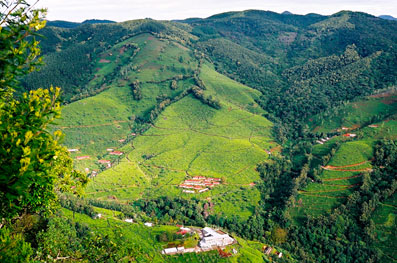A brief history of tea… in India
India is the 2nd largest producer of tea in the world, with more than 900,000 tonnes per year. Tea was introduced to India by the British in the nineteenth century, to overcome the monopoly of Chinese production. The first area to be planted was the mountain region surrounding the city of Darjeeling, perched on the Himalayan foothills, in the 1850s.

Finally, in the late nineteenth century, the British set up tea plantations in the mountainous region of the southern tip of India, including the famous Nilgiri massif. Nilgiri means "Blue Mountain". Some say this is because of the fog enveloping the mountain, which gives it a blue sheen.
Where does our tea come from?
The Tea Board of India has been fighting for years to defend the production of this region. In 1983, it created a logo to defend and lobby for a specific Darjeeling label of origin. A case was presented to the European Union to begin the process of recognising this region as a PGI (Protected Geographical Indication). Since October 20th, 2011, Darjeeling has indeed been recognised as a PGI *.
There are 87 tea gardens which can use the PGI label, located between 600 and 2250m above sea level in the mountains surrounding the town of Darjeeling. This designation applies only to black tea. Other colours of tea are nevertheless produced in the region, but in very small amounts compared to black tea. Each Darjeeling tea plant should not produce more than 100g of manufactured tea per year, i.e. a total annual production of 9 to 10 million kg, bearing in mind that the world's annual tea production is more than 3.8 million tonnes.
*What is a PGI?
""The name of a region, a specific place or, in exceptional cases, a country, used to describe an agricultural product or a foodstuff:
- originating in that region, specific place or country,
- which possesses a specific quality, reputation or other characteristics attributable to that geographical origin, and
- the production and/or processing and/or preparation of which take place in the defined geographical area"
(European Council Regulation (EC) No. 510/2006)


